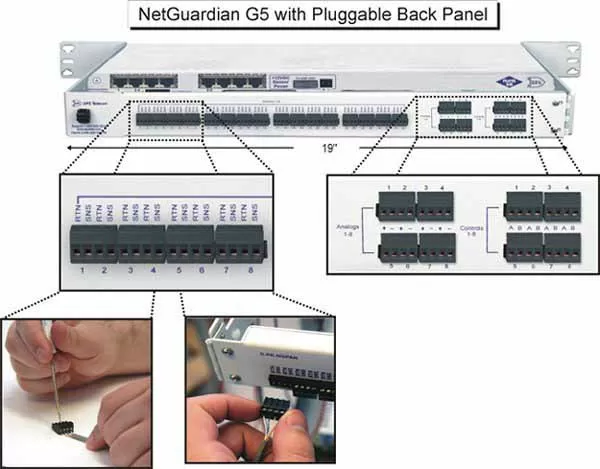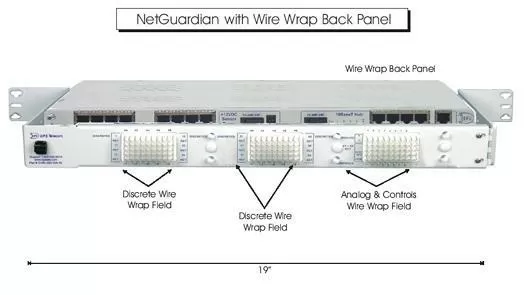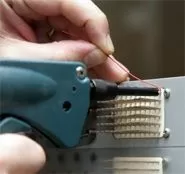Check out our White Paper Series!
A complete library of helpful advice and survival guides for every aspect of system monitoring and control.
1-800-693-0351
Have a specific question? Ask our team of expert engineers and get a specific answer!
Sign up for the next DPS Factory Training!

Whether you're new to our equipment or you've used it for years, DPS factory training is the best way to get more from your monitoring.
Reserve Your Seat TodayYou have to wire ("terminate") your monitored equipment into your RTU somehow, and there are several ways to do that. The needs of your network, as well as personal preference, will help you choose which method is best for you.
Two of the most popular methods are:
Both options can have a place in telco-grade networks. They do take a fair amount of labor time, but they're quite resistant to accidental disturbance (ex. someone brushing by the rack).
The key is to find wire wrap or pluggable options that have some kind of "quick connect" feature. That way, if you have to replace your RTU for any reason, you never have to repeat the wiring labor.

You'll attach the Hinged Pluggable Back Panel behind a NetGuardian RTU to facilitate alarm termination. The back panel consists of pluggable barriers that allow convenient termination access to the discrete alarms, controls, and analog inputs. This is ideal for uses where rack space is at a premium. The Hinged Pluggable Back Panel is designed with back panel hinges that open for easy access to the data (serial) ports, LAN, phone, and power connections of the NetGuardian.
Pluggable barriers are fast and easy to move from port to port once you've wired them. They are, however, somewhat less rugged and reliable when compared with wire wrapping (see below).


Alternatively, the Hinged Wire Wrap Back Panel will also attach behind your NetGuardian RTU to facilitate alarm termination. The back panel consists of two wire-wrap fields that allow convenient termination access to the discrete alarms and controls. The analog inputs have a special header that plugs directly into the NetGuardian's analog inputs. Since this is a hinged design, there is still easy access to the ports.
Compared to pluggable barriers, wiring wrapping has the advantage of making a more secure connection. Each peg is square and the round wire is wrapped approximately 6 times. That allows for at least 24 points of stable electrical contact between the wire and the pegs, guaranteeing proper termination of each alarm. Obviously, 6 revolutions around the peg also makes for a very secure physical connection. Wire wrapping resists accidental disconnection better than any other option.
Only you can decide which termination method is best for your network. The most important part is to choose a manufacturer who gives you options. You should also choose termination methods with "quick connect" features, like hinged back panels for your RTUs.
Wire wrap and pluggable connections aren't the only options, but they are two of the most reliable.
For simpler installs and smaller RTUs, there are easier options that still offer good reliability:
This video demonstrates how the screw-lug terminals on the NetDog and the "piano" connectors on the TempDefender securely fasten your alarm wiring.
To learn more about termination options, call DPS at 1-800-693-0351.